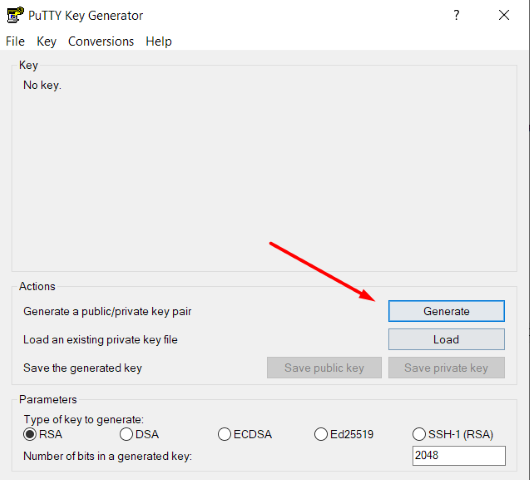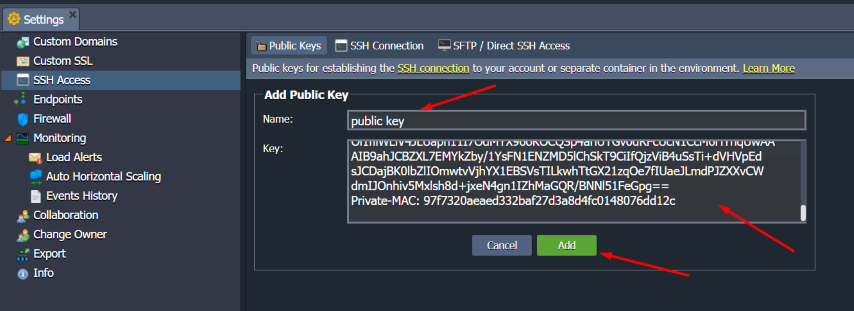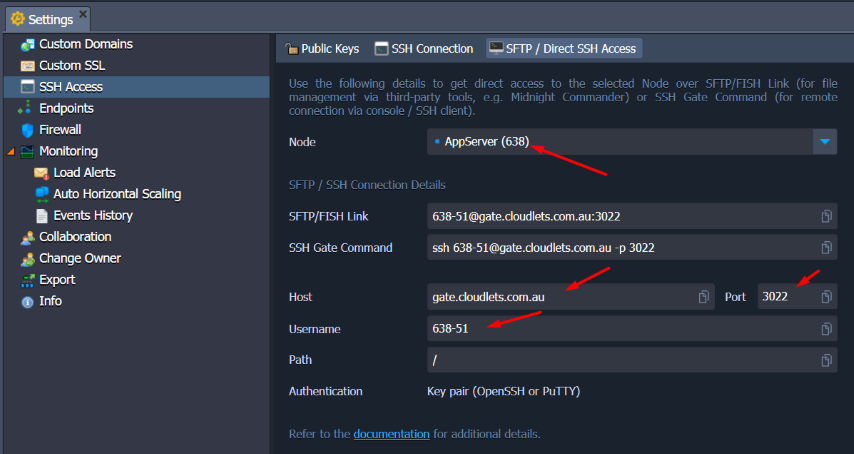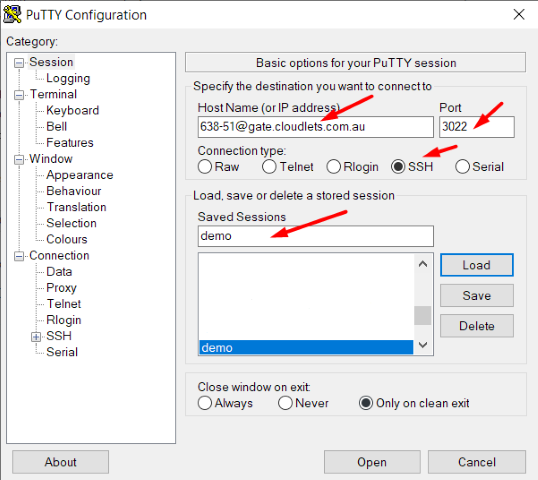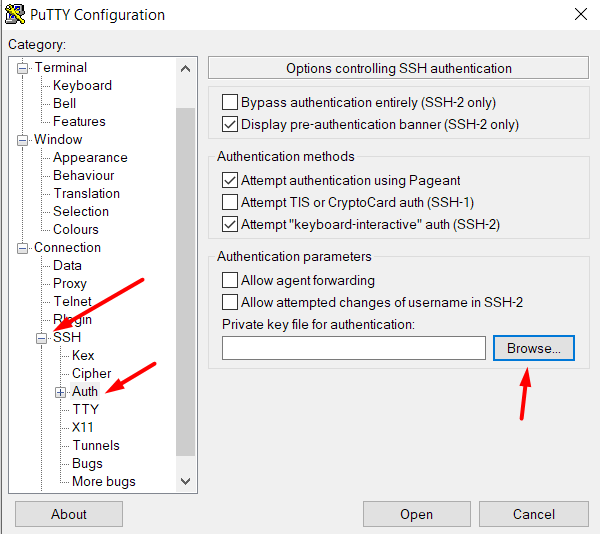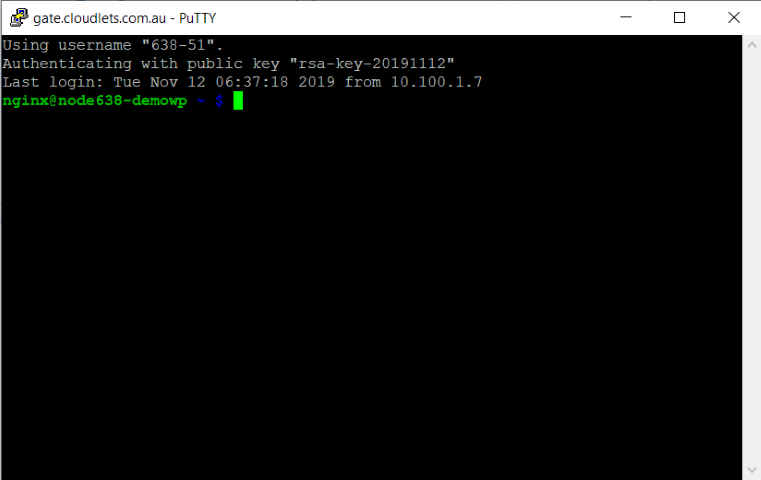|
Step by Step SSH Putty with Key
Posted by Will Kruss on 13 November 2019 10:57 AM
|
|
This is a step by step guide for logging into your Cloudlets environment using SSH* Note you can use the web based SSH access with a single click in the Cloudlets dashboard
To setup access for your desktop SSH client (Putty) please follow the instructions below 1. Go to https://www.chiark.greenend.org.uk/~sgtatham/putty/latest.html and download the putty installer. 2. Install Putty. 3. Once the installation is completed find PuttyGen (use the start menu search) and run the program and click 'Generate'
4. Move the mouse as instructed to generate the public and private key pair. 5. Click on 'Save public key' and save it to a safe location. 6. Click on 'Save private key' and save it to a safe location. You can leave the keyphrase blank if you are the only one using your computer. 7. Once you have saved the files close PuttyGen. 8. In the Cloudlets dashboard click on the 'Settings' icon next to your environment
9. Click on 'SSH Access' then click 'Add Public Key'
10. Give the key any name, and open the text file you created earlier with the PUBLIC key, and paste it into the Key value, then click 'Add'.
11. Click on the 'SFTP/Direct SSH Access' tab and ensure the correct node is listed (usually AppServer).
12. Now you need to run Putty (use the windows start search to locate it) 13. Fill out the hostname and ensure you put the username in the format specified (e.g. user@gate.cloudlets.com.au) and the port. Ensure SSH is checked and give it a name in 'Saved Sessions' field then click 'Save'.
14. Now on the left click on the + next to 'SSH' to expand it then click on 'Auth'. Then Browse and find the PRIVATE key you saved earlier.
Then on the left click back on 'Session' (at the top) then click 'Save', so it saves your session including the private key file link. Then click 'Open' to start SSH.
You now have SSH access to your environment. You can use that key to access any nodes in your account by simply changing the username associated with the node shown in the Cloudlets dashboard under 'SFTP / Direct SSH Access'. | |
|
|

